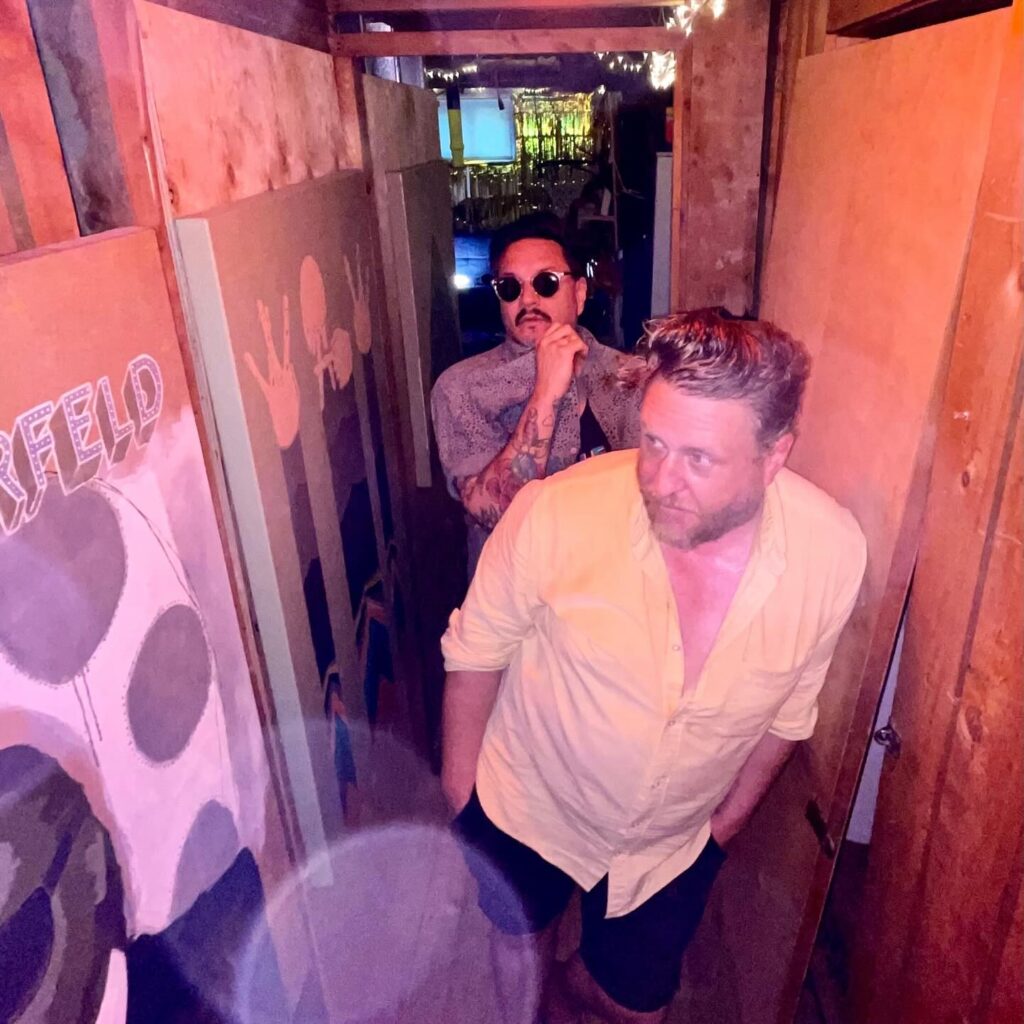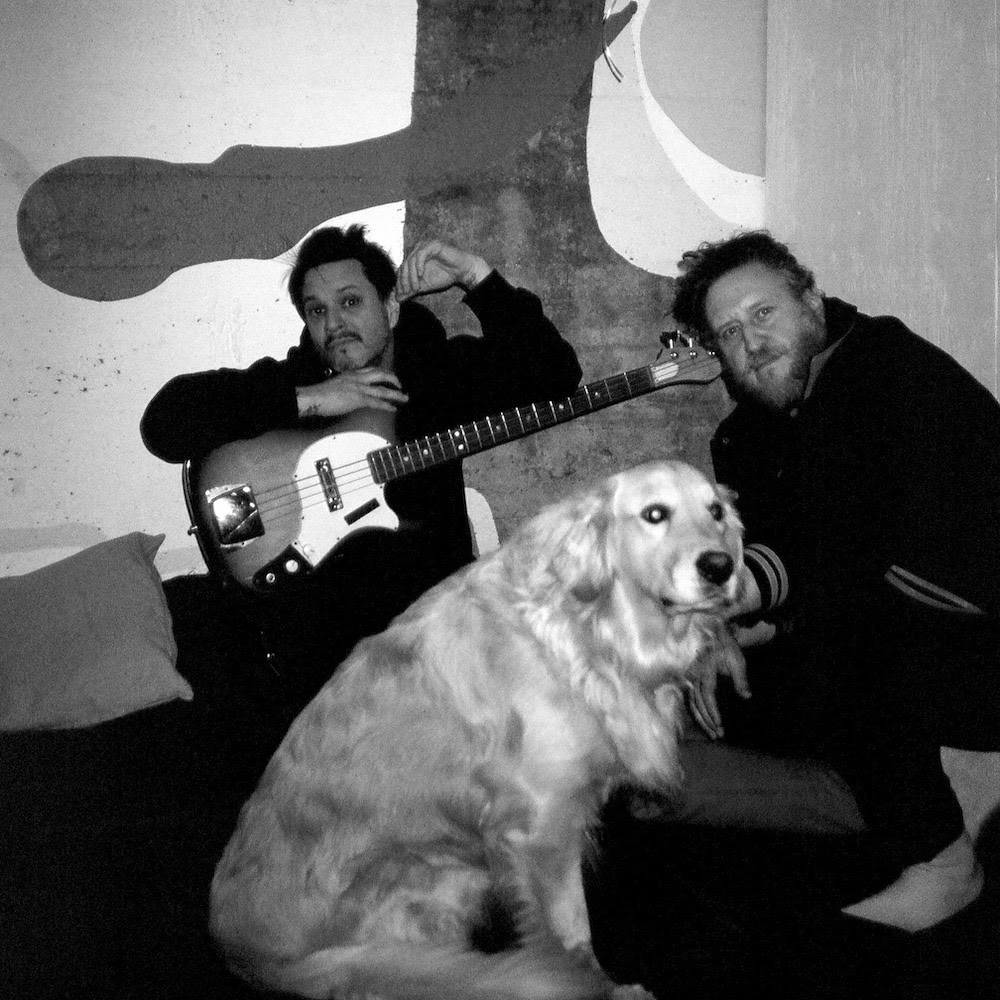‘Attention’ by We Are Wolves | Interview | New Album, ‘NADA’
Montreal-based We Are Wolves are back with their sixth full-length album, ‘Nada,’ due out November 8th via Simone Records.
This band’s latest album, ‘Nada,’ boldly blends electro post-punk, psych-noise, and Latin influences, showcasing their eclectic and fearless approach to sound. Their self-described “dystopian dance-rock” fuses dark, absurd themes with rhythms that inspire both movement and reflection, creating a unique contrast. Collaborations with Oliver Ackermann of A Place to Bury Strangers and Joseph Yarmush of Suuns further push the band into new sonic territories, while maintaining a synergy that feels natural to their evolving style. Recorded across diverse locations, from Mexico to Death By Audio NYC, the album absorbs its environments, shaping tracks with both Latin warmth and cold wave grit. With influences ranging from the Velvet Underground to Mulatu Astatke, their music draws from a deep well of inspiration while embracing fresh, adventurous ideas. The result is an album that captures their signature raw energy and their ongoing commitment to pushing boundaries. Today we are premiering their newest single, ‘Attention.’
‘Attention’ grabs you right away, kicking off with a robotic voice and gritty bass before diving into crashing drums and a steady, driving rhythm. Ortiz reveals that the track had a different creative process than the others, saying, ‘It kinda started with a fuzzed-out bass line and a simple, very “Suicide (the band)” drum machine beat that took me back to the early days of WAW.” He adds, ‘We didn’t overthink it, which allowed us to maintain that raw, primitive vibe while still showcasing the skills we’ve honed over the past 20 years.'”
“The whole creation of the ‘Nada’ album was a strange work in progress”
With the new album ‘Nada’ and singles like ‘Súper Normal,’ you’re blending multiple sounds into a coherent, yet eclectic sound. Can you share some further words about your latest album?
We always had different genres of music going through our heads, but for an unknown reason, we felt like we had to go in this electro post-punk garage direction. For this last album, we wanted to go wild and try whatever came in place—from weird cumbia and downtempo goth instrumental to psych-noise industrial.
The term “dystopian dance-rock” is a fascinating way to describe your music. Can you elaborate on how you envision the “dystopian” aspect of your work, and how it contrasts with the danceable, almost celebratory nature of your rhythms?
Sadly, these days everything seems more like “reality dance-rock” than dystopian dance-rock … So, in front of this absurd reality, we try to find a way to cope by dancing, screaming, and laughing in a primitive rock way.
Your new album features contributions from Oliver Ackermann of A Place to Bury Strangers and Joseph Yarmush of Suuns. How did these collaborations influence the album’s direction? Did their presence push you into new creative territories, or did you find a synergy that felt like a natural extension of your existing sound?
Hummm, it’s actually both! We have tremendous respect for the creative vision of Oliver and Joseph, and they definitely gave an extra push to the way we worked on some songs. But it also felt like they were always part of an extension of the creative process of the Nada album.
You recorded parts of the album in various locations, including Death By Audio NYC and Mexico, and mixed it in Montreal. How did the different environments and studios shape the album’s final sound?
The whole creation of the ‘Nada’ album was a strange work in progress from the beginning, and it was all about being completely absorbed by our environment and the people we were working with. So in a very unsurprising way, all the nice dark and happy Latin-driven songs were inspired by the Mexico vibe, and all the more noisy-cold wave songs were a total NYC/Death By Audio-Oliver feel.
Your band’s bio mentions a bunker and a spellbinding approach to music. How do you use imagery and metaphor to craft the themes of your albums?
A bunker and a spellbinding approach???… Hah, very intriguing… The only way to answer this question is with a quote from Samuel Beckett:
“When you’re up to your neck in shit, all that’s left to do is sing.”
Given your evolution from your early days with primitive synths and drum machines to the more polished sound of ‘Wrong,’ how do you see your music evolving in the future?
I hope we can deconstruct everything we have learned in these past years and maybe make some primitive songs with more polished-sounding instruments.

Let’s end this interview with some of your favorite albums. Have you found something new lately you would like to recommend to our readers?
Ohhhhh I love this, but it’s gonna be hard.
Ok, so let’s start with the latest discoveries or what I rediscovered:
Meridian Brothers – ‘¿Donde estas María?’
Charlie Megira – ‘The Abtomatic Meisterzinger Mambo Chic’
Mulatu Astatke – ‘Ethiopiques, Vol. 4: Ethio Jazz 1969-1974’
The Drin – ‘Engines Sing for the Pale Moon’
Fat White Family – ‘Serfs Up!’
Plus Instruments – ‘February-April ’81’
And now for the classics, favorites, and influences:
The Velvet underground – ‘White Light/White Heat’
Faust – ‘IV’ (1973)
Suicide – ‘Suicide’ (1977)
Crass – ‘Peel Sessions’ (1979)
The Cramps – ‘Songs the Lord Taught Us’ (1980)
Klemen Breznikar
Headline photo: Christine Grosjean-Carré
We Are Wolves Official Website / Facebook / Instagram / Twitter / Bandcamp / YouTube
Simone Records Official Website / Facebook / Instagram / Twitter / Bandcamp / YouTube
A Place to Bury Strangers | Interview




